The NASA capsule spent a week orbiting the Moon, with the European powerhouse firing its 33 engines to keep it on course and supplying electricity during the lunar trip.
The powerhouse crafted by ESA and industry teams from more than 20 companies in ten countries across Europe excelled in its performance during the two-million-kilometre journey. The module responded so well that NASA teams asked European engineers for additional tests to perform during the mission, who offered in-depth expertise on the finer details of the service module.
This is a look back at the best moments of the European Service Module in the first anniversary of the Artemis I mission to the Moon.
1. Launch
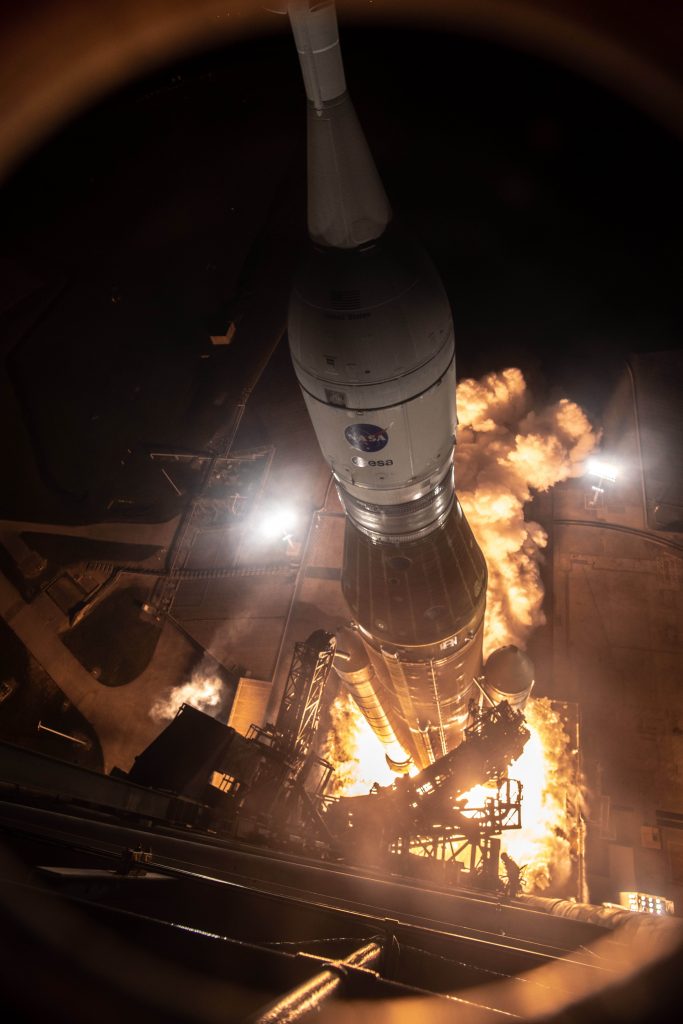
NASA’s Space Launch System lifts off on a Moon mission for Artemis I with the European Service Module. Credits: NASA/Chris Coleman, Kevin Davis.
NASA’s mega Moon rocket roared into the night and onto the Moon on 16 November 2022. The Space Launch System lifted off from the Kennedy Space Center in Florida, USA, and put the Orion spacecraft and its European Service Module into Earth orbit.
The clock marked 01:47 local time as European teams on both sides of the Atlantic held their breath. This image shows the rocket and spacecraft on top of it lifting off as umbilical arms swung away to clear the path for the rocket’s ascent from launchpad 39B.
The journey beyond the Moon and back was the culmination of a collaboration that started a decade ago, when ESA confirmed to NASA in 2013 that Europe will deliver a transportation vehicle that will carry astronauts farther into space than ever before. As a testament to this international cooperation, the ESA logo stood high atop the most powerful rocket ever built.
Throughout the 25-day mission, European engineers were on hand at all times to provide expertise and in-depth knowledge of the service module. The mission evaluation room at ESA’s technical heart in The Netherlands also had personnel round the clock in direct communication with their US and European colleagues in the main mission control at NASA’s Johnson Space Center, in Houston, USA.
2. Big boost for a lunar flyby
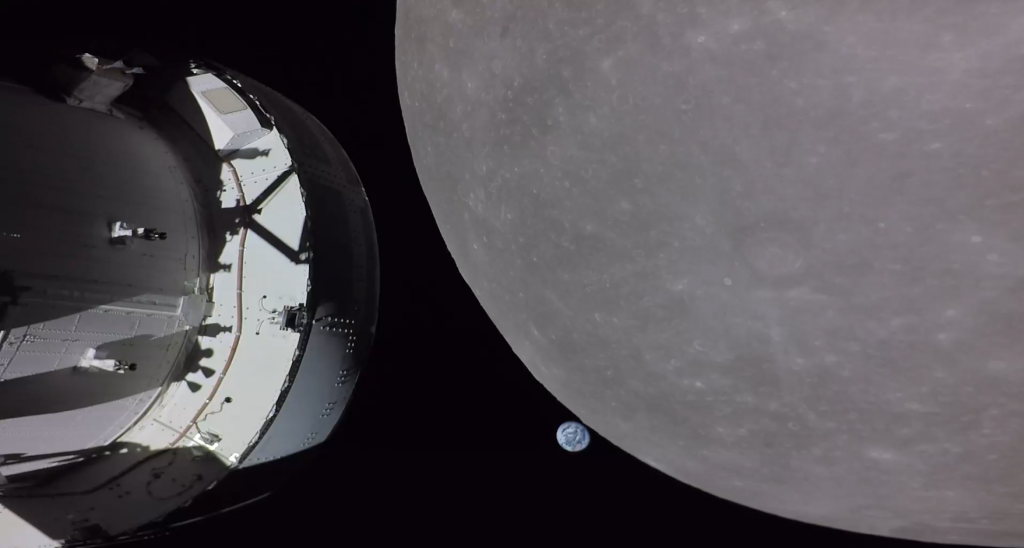
The Orion spacecraft with European Service Module (left), Earth (middle) and the Moon (right) are captured in this ‘family portrait’ by Orion’s solar array camera. Credits: NASA
Six days into the Artemis I mission, the Orion spacecraft performed a key manoeuvre. Just a little more than 130 km from the lunar surface, the main engine on the European Service Module – a repurposed Space Shuttle engine on its 20th spaceflight – fired for over two minutes to push the spacecraft towards a lunar orbit using the Moon’s gravity.
The manoeuvre, known as the Outbound Powered Flyby, was another success for the Artemis I mission. Orion was well on track for its return to Earth.
As the spacecraft flew behind the Moon, communication with Earth was lost for 34 minutes. Although the blackout after the boost was expected, it was still a relief when NASA’s Deep Space Network reacquired signal from Orion.
The big burn was successful, and teams on Earth welcomed the spectacular views of the Moon as Orion passed about 2250 km above the Apollo 11 landing site at Tranquility Base.
A total of five main engine burns were completed during the mission. NASA confirmed that almost two tonnes of propellant remained in the tanks at the end of the mission, saving a good 25% of the fuel.
3. Far from home
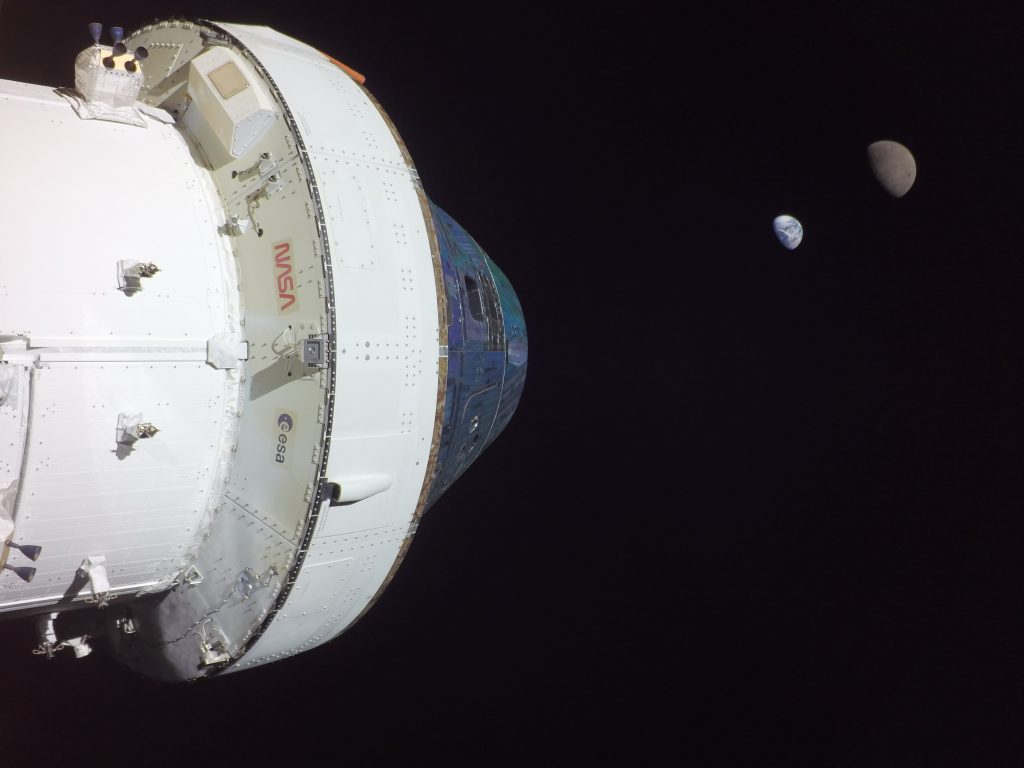 View of the Orion capsule as it reached a maximum distance from Earth, surpassing the record for distance traveled by a spacecraft designed to carry humans set during Apollo 13. Credits: NASA
View of the Orion capsule as it reached a maximum distance from Earth, surpassing the record for distance traveled by a spacecraft designed to carry humans set during Apollo 13. Credits: NASA
Confirmation that the mission was on track came halfway through the mission on day 13, when the Orion spacecraft and its European Service Module were near its maximum distance from Earth, at 432 210 km from our home planet and over 64 000 km from the Moon.
The image at this stage shows the capsule pointing at our planet and the Moon from lunar orbit, after surpassing the maximum distance from Earth of any other spacecraft built for humans.
4. Powerful performance
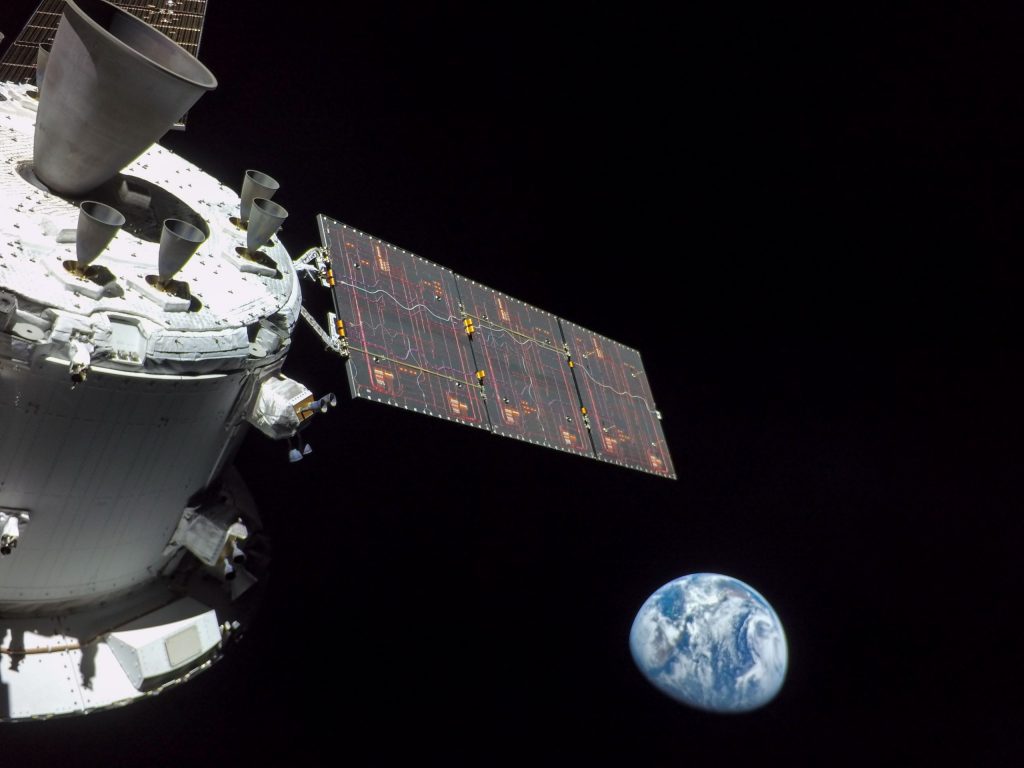 The 7-m long solar arrays provide enough electricity to power two households on Earth. Credits: NASA
The 7-m long solar arrays provide enough electricity to power two households on Earth. Credits: NASA
Orion flew with the four European-built solar arrays facing the Sun during most of the Artemis mission to generate maximum power. The seven-metre long solar arrays are designed to provide enough electricity to power two households on Earth.
The mission went so smoothly that engineers could afford to move the solar arrays around more than initially planned. Teams added a new test on day 14 to collect additional information on the temperature systems.
Engineers modified the sun-tracking mode by orienting the solar arrays outside the optimal position to receive sunlight by up to 20 degrees. This additional flight test helped engineers understand the range of Orion’s thermal performance in preparation for lunar missions with astronauts.
The European Service Module generated about 15% more power than initially expected during the Artemis I mission. Engineers can now confidently say that two of the four solar arrays would deliver sufficient energy to reliably run all systems in cruise mode.
Solar arrays were also used as ‘selfie sticks’ to capture spectacular images of the mission. All four wings had Go-Pro cameras fastened at the end and connected to the spacecraft over a wireless network. The images documented the outside of the spacecraft during the more challenging manoeuvres.
5. Time to say goodbye
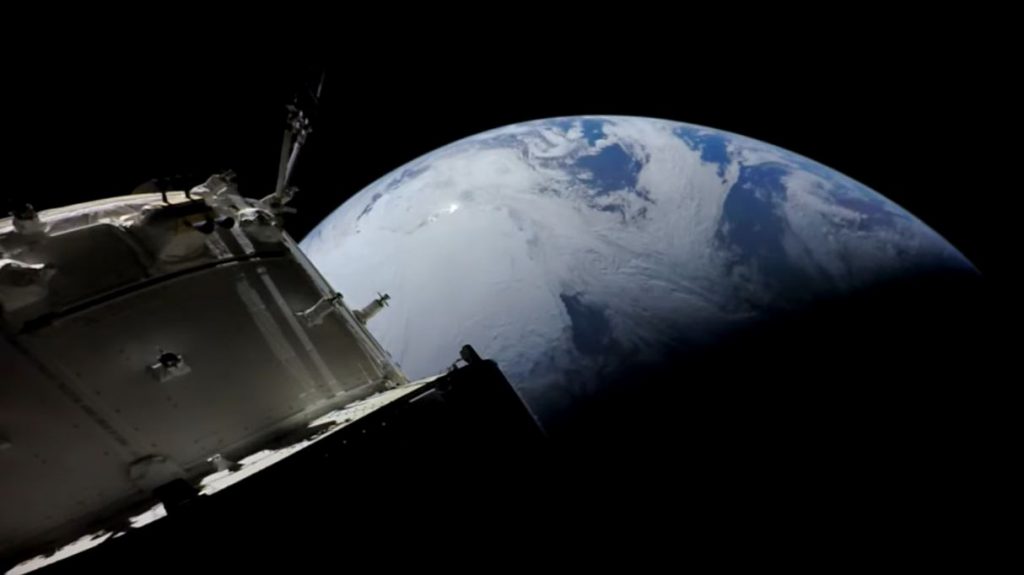 One of the last images of the European Service Module before separating from the Orion capsule on its return to Earth. The module burned up harmlessly in Earth’s atmosphere on 11 December 2022. Credits: NASA
One of the last images of the European Service Module before separating from the Orion capsule on its return to Earth. The module burned up harmlessly in Earth’s atmosphere on 11 December 2022. Credits: NASA
The European Service Module used its 24 small thrusters for the last time for just over eight seconds: a little nudge and a final setup for reentry.
The European Service Module separated from the Crew Module firing pyrotechnic bolts that broke the seal between the spacecraft modules. Springs pushed the modules away from each other, and the Crew Module was on its own in the last 40 minutes of its mission.
Without a heat shield to protect it from the friction of entering our planet’s atmosphere, the service module burned up harmlessly, as planned, over the Pacific Ocean. The Artemis I mission for the European Service Module lasted 25 days, 10 hours and 10 minutes.
The Orion crew module oriented itself to come in fast over Earth using a skip entry technique. The capsule arrived from the south along the west coast of South America to hit its target splashdown area off the coast of Baja California, Mexico, on 11 December 2022.

 Automated Transfer Vehicle page
Automated Transfer Vehicle page ATV blog archive
ATV blog archive
Discussion: one comment
ESA’s blog captures the essence of Europe’s pivotal role in Artemis I, highlighting the top 5 moments in this historic journey. Telkom University
Visit us Telkom University